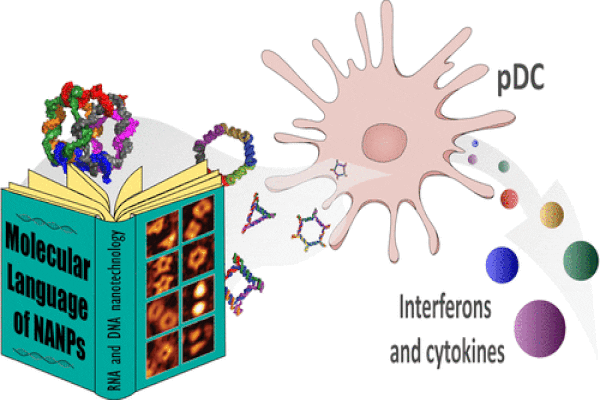Justin Halman

Justin Halman
 Chemistry MULTIFUNCTIONAL RNA NANOPARTICLES WITH IMMUNOMODULATORY PROPERTIES
Chemistry MULTIFUNCTIONAL RNA NANOPARTICLES WITH IMMUNOMODULATORY PROPERTIES
Research Description: Multifunctional RNA Nanoparticles with Immunomodulatory Properties
Research Group: Afonin Research Group
Previous Degree: B.S. Nanoscale Science, SUNY Polytechnic Institute
Dissertation Defense
Immunostimulatory properties of nucleic acid nanoparticles
Nucleic acids (DNA and RNA) are ubiquitous biomolecules found throughout all living organisms. They can act as genetic information storages or messengers, enzymes, molecular switches, and much more. Although DNA is used almost exclusively for its ability to store information, discoveries in the roles of RNA in development and homeostasis through complex molecular interactions are ever-expanding. The myriad of roles that nucleic acids can perform makes them ideal therapeutic candidates, as well as molecular machines. Furthermore, their inherent structure makes investigating their use as materials a worthwhile endeavor. Combining these applications, nucleic acid nanoparticles have the ability to assume nearly any designable structure, varying in shape, size, and composition. This degree of structural customizability, made possible by both Watson-Crick canonical and non-canonical interactions, further enhances the ability to fine-tune a given nanoparticles’ resulting physicochemical properties. Additionally, their inherent structures make them able to simultaneously carry several different pharmaceuticals including nucleic acid-based agents such as RNA interference inducers, aptamers, and immunostimulatory sequences, as well as small molecules and fluorescent entities. This combination of customizability, biocompatibility, and therapeutic activity makes nucleic acid nanoparticles a highly promising approach for treating complex diseases. Despite rapid advances in the field of therapeutic nucleic acids, unexpected deleterious immune responses have halted both clinical trials and research, leading to hesitation towards their advancement into clinical use. This dissertation aims to elucidate the link between structure and composition of nucleic acid nanoparticles and their ability to produce an immune response in cells. Furthermore, the investigation of chemical modifications, existing both naturally in cells as well as artificially for therapies, is explored for its use in enhancing the stability of nucleic acid nanoparticles while altering their immunostimulatory capabilities. Finally, an approach of dynamic, response activated nucleic acid nanoparticles is explored.
Date: July 16, 2020

